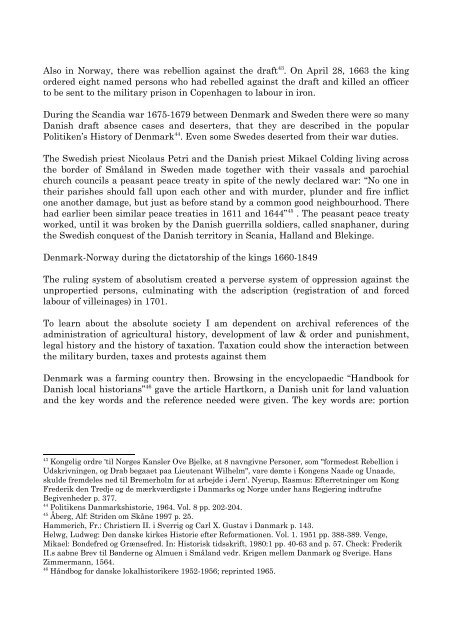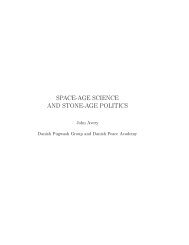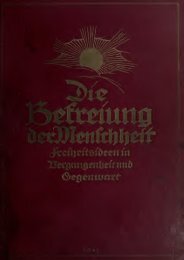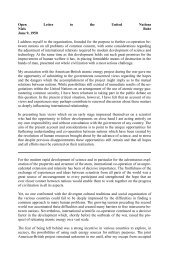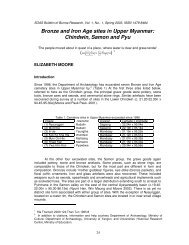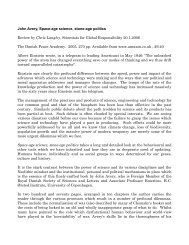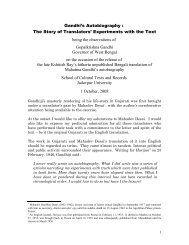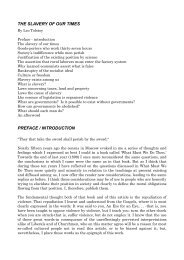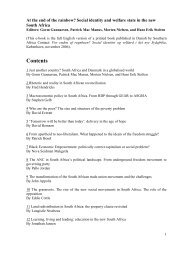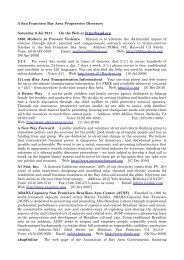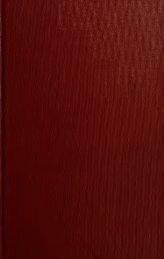Terp, Holger: Danish Peace History - Det danske Fredsakademi
Terp, Holger: Danish Peace History - Det danske Fredsakademi
Terp, Holger: Danish Peace History - Det danske Fredsakademi
Create successful ePaper yourself
Turn your PDF publications into a flip-book with our unique Google optimized e-Paper software.
Also in Norway, there was rebellion against the draft 43 . On April 28, 1663 the king<br />
ordered eight named persons who had rebelled against the draft and killed an officer<br />
to be sent to the military prison in Copenhagen to labour in iron.<br />
During the Scandia war 1675-1679 between Denmark and Sweden there were so many<br />
<strong>Danish</strong> draft absence cases and deserters, that they are described in the popular<br />
Politiken’s <strong>History</strong> of Denmark 44 . Even some Swedes deserted from their war duties.<br />
The Swedish priest Nicolaus Petri and the <strong>Danish</strong> priest Mikael Colding living across<br />
the border of Småland in Sweden made together with their vassals and parochial<br />
church councils a peasant peace treaty in spite of the newly declared war: “No one in<br />
their parishes should fall upon each other and with murder, plunder and fire inflict<br />
one another damage, but just as before stand by a common good neighbourhood. There<br />
had earlier been similar peace treaties in 1611 and 1644” 45 . The peasant peace treaty<br />
worked, until it was broken by the <strong>Danish</strong> guerrilla soldiers, called snaphaner, during<br />
the Swedish conquest of the <strong>Danish</strong> territory in Scania, Halland and Blekinge.<br />
Denmark-Norway during the dictatorship of the kings 1660-1849<br />
The ruling system of absolutism created a perverse system of oppression against the<br />
unpropertied persons, culminating with the adscription (registration of and forced<br />
labour of villeinages) in 1701.<br />
To learn about the absolute society I am dependent on archival references of the<br />
administration of agricultural history, development of law & order and punishment,<br />
legal history and the history of taxation. Taxation could show the interaction between<br />
the military burden, taxes and protests against them<br />
Denmark was a farming country then. Browsing in the encyclopaedic “Handbook for<br />
<strong>Danish</strong> local historians” 46 gave the article Hartkorn, a <strong>Danish</strong> unit for land valuation<br />
and the key words and the reference needed were given. The key words are: portion<br />
43<br />
Kongelig ordre 'til Norges Kansler Ove Bjelke, at 8 navngivne Personer, som "formedest Rebellion i<br />
Udskrivningen, og Drab begaaet paa Lieutenant Wilhelm", vare dømte i Kongens Naade og Unaade,<br />
skulde fremdeles ned til Bremerholm for at arbejde i Jern'. Nyerup, Rasmus: Efterretninger om Kong<br />
Frederik den Tredje og de mærkværdigste i Danmarks og Norge under hans Regjering indtrufne<br />
Begivenheder p. 377.<br />
44<br />
Politikens Danmarkshistorie, 1964. Vol. 8 pp. 202-204.<br />
45<br />
Åberg, Alf: Striden om Skåne 1997 p. 25.<br />
Hammerich, Fr.: Christiern II. i Sverrig og Carl X. Gustav i Danmark p. 143.<br />
Helwg, Ludweg: Den <strong>danske</strong> kirkes Historie efter Reformationen. Vol. 1. 1951 pp. 388-389. Venge,<br />
Mikael: Bondefred og Grænsefred. In: Historisk tidsskrift, 1980:1 pp. 40-63 and p. 57. Check: Frederik<br />
II.s aabne Brev til Bønderne og Almuen i Småland vedr. Krigen mellem Danmark og Sverige. Hans<br />
Zimmermann, 1564.<br />
46<br />
Håndbog for <strong>danske</strong> lokalhistorikere 1952-1956; reprinted 1965.


